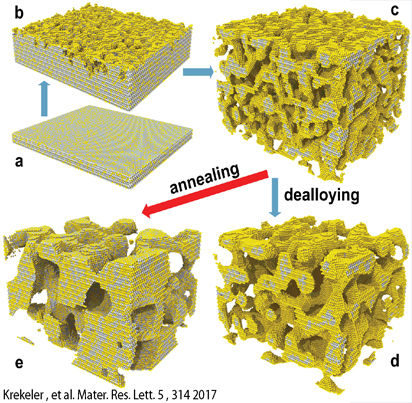Nanoporous metal microstructures prepared by dealloying of a solid solution or compound represent an emerging class of materials, characterized by their network of solid “ligaments” with a size adjustable between few nm and several µm. Dealloying generates macroscopic bodies containing extremely many (>1015/cm3) ligaments, incorporating the exciting properties of nanoscale objects into macroscopic materials from which engineering components can be formed.
Even though dealloying has a long history in materials research, its mechanisms are only partly understood. Their study touches upon the thermodynamics of driven systems, on the topology of bicontinuous microstructures and on its evolution during coarsening.
Topical focus for the 2019 meeting will include: corrosion science, topology and morphological evolution, mechanics of materials, microstructure and characterization, catalysis, and functional applications.
